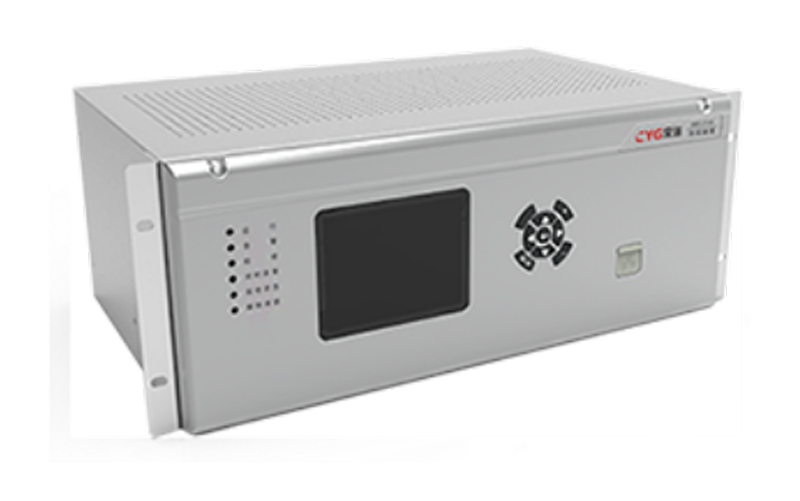Protective relaying is an important aspect of complex electrical power systems. It uses a special device called a protective relay. This device detects faults in transformers and disconnects faulty components to prevent damage, outages, and safety hazards. Because of these features, protective relaying improves power safety controls and contributes to overall industrial safety solutions. Let’s explore some of the common fault types and how protective relaying provides operational safety.

Here are some common types of faults that compromise the safety and reliability of power systems:
● Short circuits (line-to-line, line-to-ground, and three-phase)
● Overloads
● Open circuits
● Ground faults
● Equipment failures, such as transformer breakdowns or cable insulation degradation
When the fault diagnosis is accurate, the reliability and safety of the power system are greatly enhanced. This is because protection relays and advanced detection systems identify the faults quickly and manage them before they spread.
Protection relays continuously monitor the electrical parameters like current, voltage, and frequency of the power system. When it detects a fault, it sends signals to trip the circuit breaker and isolate the defective part.
There are various sensing elements in the protection relays, like voltage transformers or current transformers. They measure the system's electrical qualities and then compare the present settings with measured values. If the values exceed the threshold, the relay system starts operating. The new protection relays come with digital signal processing algorithms and microprocessors to provide faster and more accurate protection functions.
A typical relay protection setup has:
● Current and voltage transformers for accurate measurement
● Protection relays to process measurements and detect anomalies
● Circuit breakers that act upon relay commands
● Communication networks that coordinate information between protection units
There are various types of protective relaying, and each addresses different kinds of faults and system needs. Let’s have a look:
It is designed to operate when the current exceeds a preset value. This is one of the most widely used and simple protection methods.
This type measures the electrical impedance between the relay and the fault. It provides quick identification of faults along transmission lines.
This is used mainly for transformers, generators, and busbars. Differential protection detects differences between incoming and outgoing currents and signals internal faults.
Additional methods, such as earth fault protection, voltage protection, and frequency protection, also help create comprehensive and layered industrial safety solutions.
The following criteria are kept in mind when protective relays are designed and manufactured:
● Selectivity: The system should isolate only the area that has a fault and leave the healthy parts operational. This decreases downtime, prevents equipment damage, and helps to maintain uninterrupted service.
● Speed: Fast operation is important to limit equipment damage and prevent fault propagation.
● Sensitivity: Protective relays should detect even small deviations from normal operating conditions that could indicate emerging faults.
● Reliability: Above all, protection systems must be dependable and capable of operating under all fault conditions without fail.
AI has the ability to analyze and process large databases in real time. The use of automation and intelligent technologies has completely transformed protection relay systems. Smart digital protection relay devices now enable:
● Real-time monitoring: AI algorithms accurately assess the electrical parameters of the digital relay with exceptional speed.
● Rapid decision-making: AI dynamically adjusts the settings of the relay during fluctuating loads. This dynamic adaptation decreases the risk of equipment damage, and the system stability is also maintained.
● Predictive maintenance through advanced fault diagnosis analytics: The integration with AI promotes a shift from reactive to predictive maintenance for relays and associated systems.
● Remote operation and centralized control: Modern protection relay systems are designed with integrated communication features. This allows remote monitoring and control from centralized command centers.
● Adaptive settings that allow dynamic adjustment based on system conditions: In traditional systems, relay settings are fixed. They require manual reconfiguration when system conditions change. However, AI-integrated protection relays can adapt their parameters automatically based on grid demands, load variations, or network configurations.
Automation not only increases operational safety but also increases the efficiency and responsiveness of power networks. As our energy systems grow in complexity, integrating intelligent technologies into relay protection is no longer optional for us; it is essential.
Reliable protective relaying is the backbone of any secure and efficient power system. At Changyuan Technology Group (CYG), we offer trusted and innovative solutions that are specifically designed to meet the highest standards of power safety control and system reliability.
Explore our digital protection relay solutions and see how we can support your needs in line protection, fault diagnosis, and overall industrial safety. Contact CYG today to learn more and find the right protection solutions for your operations.